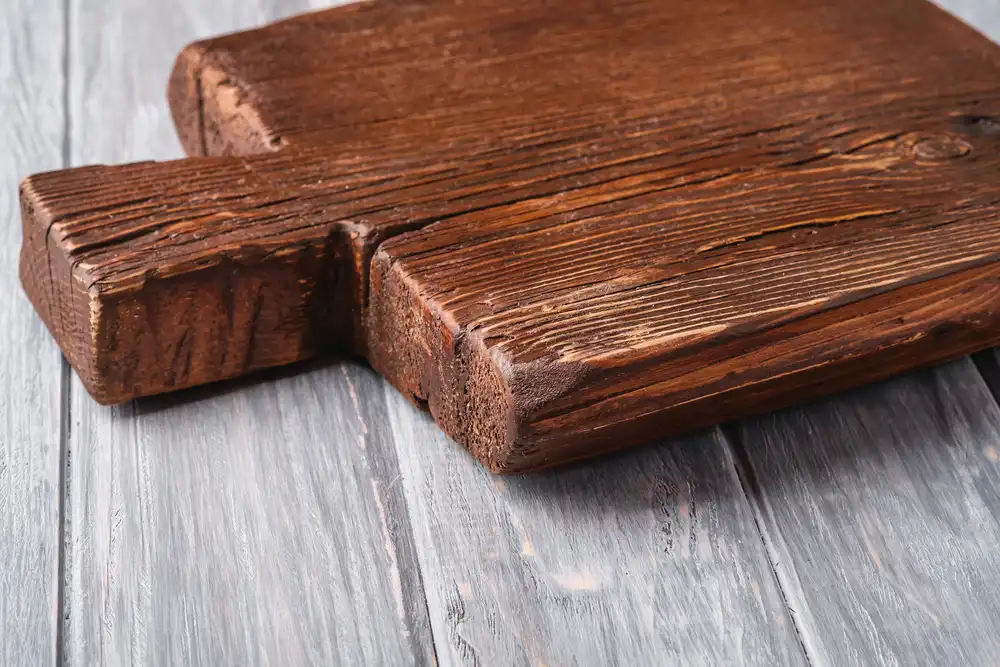What is teak oil made out of?
Teak oil is made out of the teak tree, a tropical hardwood. The oil is extracted from the wood and then used for various purposes, including food-safe oil. Linseed oil, pure Tung oil, mineral spirits (petroleum naphtha), and varnish are all used to produce teak oil. Petroleum naphtha is a petroleum derivative that is valuable as an oil thinner. Based on the amounts and quality of the substances used, formulas can differ from one brand to another.
Teak oil has traditionally been essential to protect outside wood, such as outdoor wooden furniture and wood on boats. Teak oil is valuable to safeguard teak from weathering while slowing down the natural greying process.
Although Teak oil is suitable for softwood and hardwoods, hardwoods are preferred. Because the oil is thin, softwoods that absorb more than hardwoods and have less natural oil absorb more, potentially making it a more expensive option. Teak oil can encourage the growth of mold in warm, humid situations.

Is teak oil Food Safe?
In most cases, teak oil contains harmful compounds such as mineral spirits, turpentine, and varnish, making it unfit for consumption. Even if tung oil or linseed oil is the only component on a teak oil label, don’t assume it’s food-safe because these natural oils are often chemically treated and not pure.
Tung oil, linseed oil, turpentine, mineral spirits, and varnish are all found in most teak oils. Three of the five components are poisonous chemicals that are not food-safe from the start, and the two natural oils likely only contain trace amounts of pure oil, with chemicals filling in the gaps. Always presume that anything labeled as teak oil is not food-safe and avoids using it in culinary work or any other endeavor where food may come into contact.
Can you use teak for a cutting board?
You can use teak oil on cutting boards. Its natural oil content, which helps it resist drying, is one of the reasons for its popularity. Teak oil does not leak significantly, even in direct sunlight, much alone indoors. However, teak oil is not a safe solution for cutting boards or any project that may contact food in a kitchen.
Because cutting boards regularly come into touch with food, using a non-food safe product like teak oil can constitute a health danger. To create a food-safe finish for your cutting board, you can use entirely natural solutions such as food-grade mineral oil, walnut oil, beeswax, or carnauba wax.
Is Watco teak oil and stain Food Safe?
Watco teak Oil plus Stain is a food-safe finish for wooden butcher blocks, cutting boards, salad bowls, and other wood applications. It’s simple to apply and maintain, and once thoroughly dried, it’s non-toxic and food-safe.
Watco Teak Oil is one of the most effective teak oils available. It is easy to use, but it also protects your furnishings. You can keep the color from fading by adding regular coatings of Watco Teak oil. It gives your all-around furniture protection. The most pleasing aspect is that it is helpful on various products. It’s pretty adaptable, and you may utilize it to cleanse and treat a variety of wood kinds.
Is teak oil safe for garden beds?
Teak Oil is entirely safe and non-toxic because it comes from a traditional mixture of pure, high-quality Tung and Linseed Oil. Teak Oil’s unique blend of oils allows it to safeguard and waterproof exotic wood and hardwoods while restoring the elegance of old and weathered teak garden furniture.
You can use teak oil to coat and protect rough or naked wood and maintain it over time. Teak Oil is ideal for garden furniture because it contains UV protection chemicals that slow the greying process of teak and all other interior and external wood.

Is teak oil toxic?
Does teak oil have fumes?
Teak oil does emit odors. It’s a flammable liquid with volatile fumes. If eaten and enters the airways, it can be lethal. It may produce drowsiness or dizziness and an adverse skin reaction.
Teak oil can poison dogs, cats, and other household pets. Teak furniture is frequently oiled to avoid fading to a silvery patina. With notes or a large X conspicuously shown on the label, some teak oils caution that they can be dangerous. Naphtha, a little-known chemical, is the source of the hazard. Naphtha is an aromatic liquid that is colorless and sometimes reddish-brown in appearance, comparable to gasoline. It’s made out of liquid hydrocarbon mixtures and can be a distillation product made from petroleum, coal tar, or peat boiling.
Naphtha is a chemical used to make high-octane gasoline and as a solution in the chemical sector. Lighter fluid, camp stove fuel, and some cleaning solvents, such as teak oil, include naphtha. Naphtha is a carcinogenic substance. Because it’s so difficult to distinguish the specific chemical from other chemicals in the solution, testing the effects of naphtha on living creatures is extremely tough. When naphtha comes into contact with your skin, it can induce a burning feeling or rash within minutes. Teak oil can cause nausea, vomiting, and diarrhea if consumed.
Is teak safe for cooking?
You can safely use nonstick cookware with teak wood. They are long-lasting and fashionable, and you may cut them into various shapes or fit them into the property specifications to suit your needs. It’s also simple to clean; hand-wash the kitchenware in warm water with a light detergent and air dry.
How do you care for teak salad bowls?
Hand-wash with gentle soap and water, avoiding soaking the bowl, and dry immediately with a soft cloth. Teak bowls should never be left to air dry or placed in the refrigerator or dishwasher. High heat, humidity, and dry air can make the wood crack, so store your bowl away from direct sunlight, heaters, and the oven in a location with excellent air circulation. To keep the finish looking good, massage it with mineral oil now and again.
You mustn’t put wooden goods in the dishwasher or microwave. Because wood is naturally antibacterial, cleaning and sanitizing these objects helps limit the number of bacteria. The porous surface of wood, contrary to widespread assumption, deprives bacteria of the warmth and moisture they require to exist, and microorganisms die on the surface within seconds.
- Pyrography Techniques for Beginners: Textures and Shading - January 23, 2024
- Troubleshooting Jointer Issues: Why is Your Jointer Not Flattening Wood? - October 11, 2023
- Unlocking the Secrets of Jointing to Increase Width - September 29, 2023
